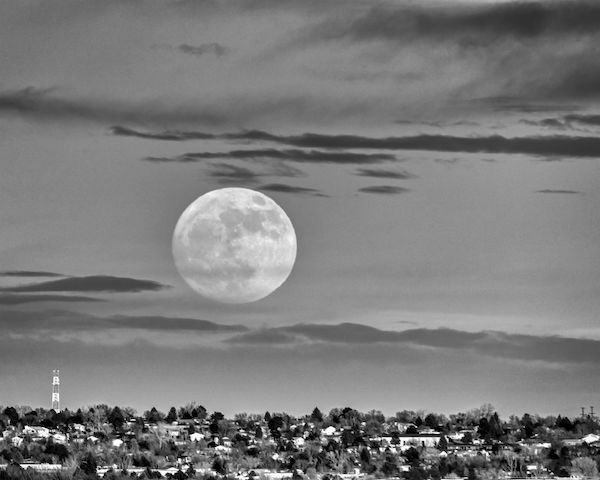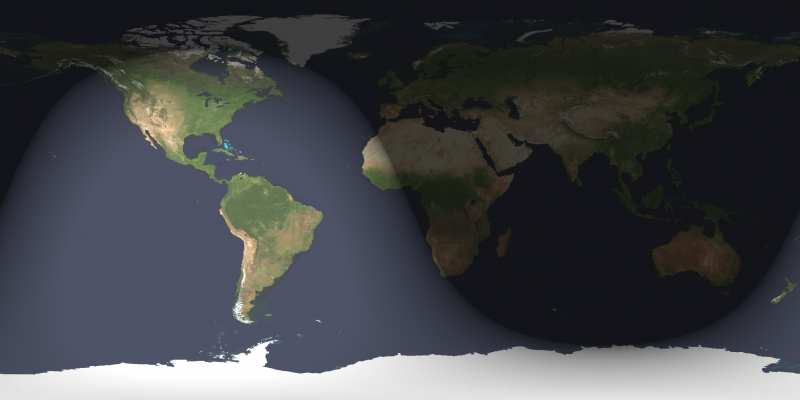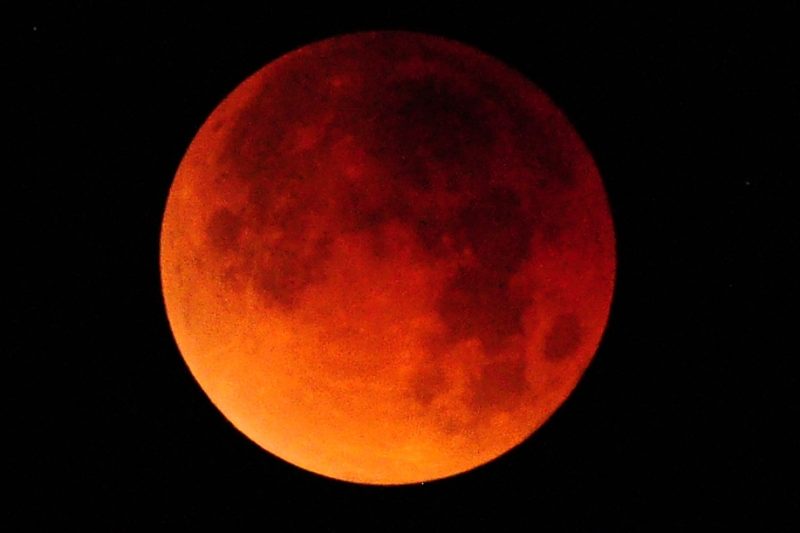December 22, 2018, will bring the final full moon of the year, falling less than a day after the December solstice. How close are the solstice and full moon in 2018? The solstice is December 21 at 4:23 p.m. CST (22:23 UTC). The full moon is December 22 at 11:49 a.m. CST (17:49 UTC). So the solstice and full moon fall less than one day apart. That means that – although the Northern Hemisphere had its longest winter night on December 21 – the lamp of a nearly full moon lit up the nighttime from dusk until dawn on solstice night. On December 22 – the night after the solstice – the moon will be technically past full as seen from the Americas, but it’ll still look round and full in the night sky.
On December 22, the moon will appear skirting near the upraised Club of the easy-to-spot constellation Orion the Hunter, as shown on the chart at the top of this post.
The last time the December solstice and full moon happened less than a day apart was in 2010, and the next time will be 2029.

In North America, we call the December full moon the Long Night Moon, Cold Moon or Moon Before Yule. In the Southern Hemisphere, where it’s summer now, names for this full moon include Strawberry Moon, Honey Moon and Rose Moon. Read more: What are the full moon names?
2018’s December full moon counts as the third-closest – and thereby the third-largest – of this year’s 13 full moons. But there’s some disagreement as to whether this full moon is a supermoon.
Read more: How many supermoons in 2019?
EarthSky lunar calendars are cool! They make great gifts. Order now. Going fast!
The moon appears full to the eye for two to three nights. However, astronomers regard the moon as full at a precisely defined instant: when the moon is exactly 180 degrees opposite the sun (in ecliptic longitude).
That full moon instant arrives on December 22 at 17:49 UTC. At U.S. time zones, that places the full moon at 12:49 p.m. Eastern Time, 11:49 a.m. Central Time, 10:49 a.m. Mountain Time, 9:49 a.m. Pacific Time, 8:49 a.m. Alaskan Time and 7:49 a.m. Hawaiian Time on December 22.
Want to know the full moon time for your sky? Click here and be sure to check the Moon phases box.

As seen from the Americas, the December 22 moon is technically a waning gibbous moon. From most of the Americas, the full moon happens during the daylight hours on December 22, when the moon is still beneath the horizon.
But no matter. Look for the moon to light up the eastern sky around dusk or nightfall on December 22. It’ll climb highest up for the night around midnight and to sit low in the west at daybreak.
As seen from the Northern Hemisphere, the December full moon mimics the lofty path of the June summer solstice sun. That’s because the sun is so far south right now, and because, at the vicinity of full moon, the moon rises and sets pretty much opposite the sun. Therefore, this December 2018 full moon rises and sets far north of due east and west, much as the sun does on the June solstice.
If you live as far north as Barrow, Alaska, you’d see no sun at all around the December solstice. But this solstice full moon will be out all hours around the clock – play-acting as the midnight sun of summer.
As seen from the Southern Hemisphere, meanwhile, this same December full moon follows the low path of the June winter solstice sun.
Want to find out the sunrise/sunset and moonrise/moonset times for your sky? Click here and remember to check on the Moonrise and moonset box.
Unlike the full moon of December 2018, the full moons of December 2010 and December 2029 – also less than a day from a solstice – display total eclipses.
This December 2018 full moon won’t pass through the Earth’s dark shadow, but next month’s January 2019 supermoon will feature a total eclipse of the moon.

Bottom line: Full moon comes on December 22, 2018, one day after the solstice. The last time the December solstice and full moon happened less than one day apart was in 2010, and the next time will be 2029.











